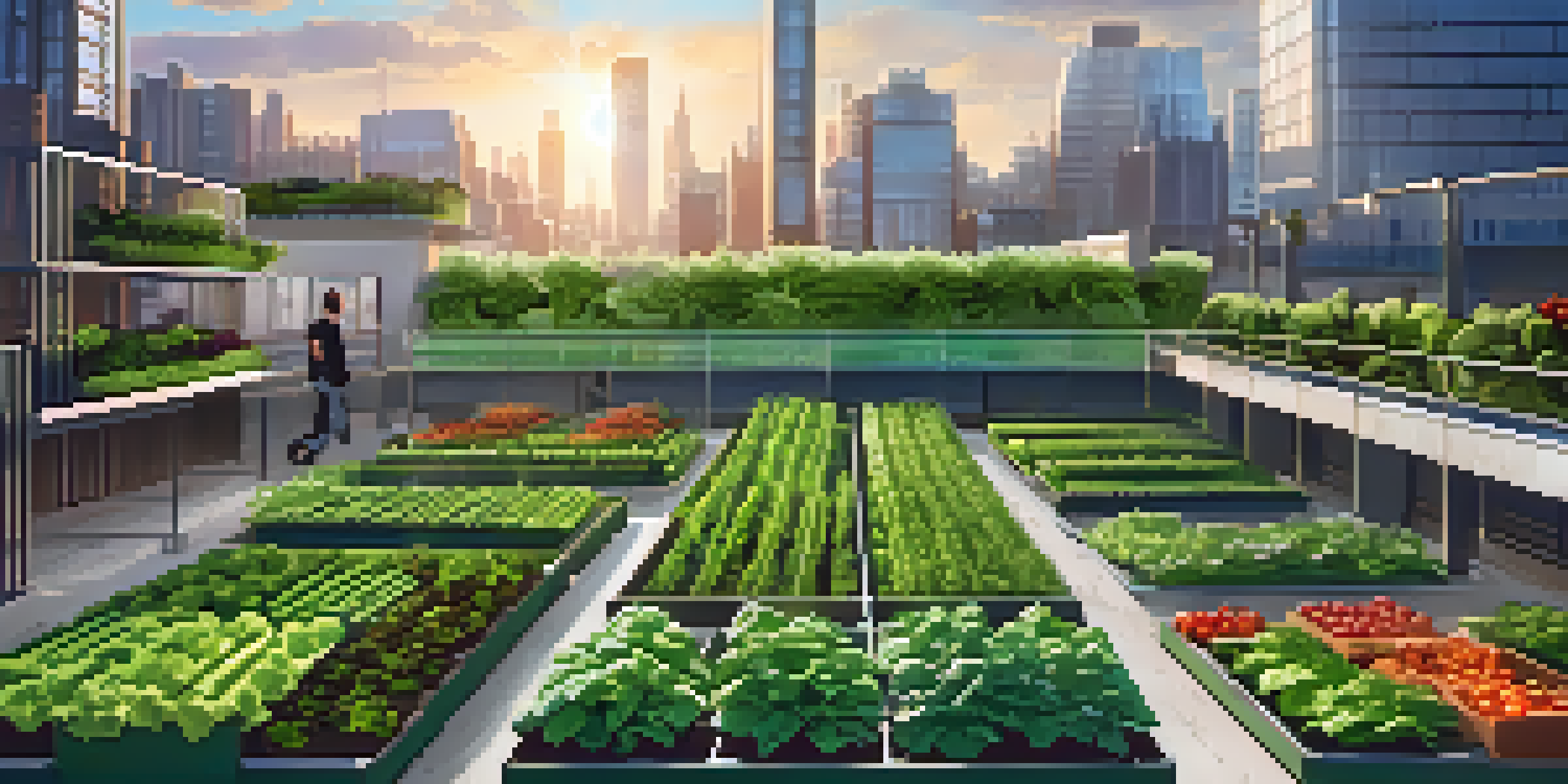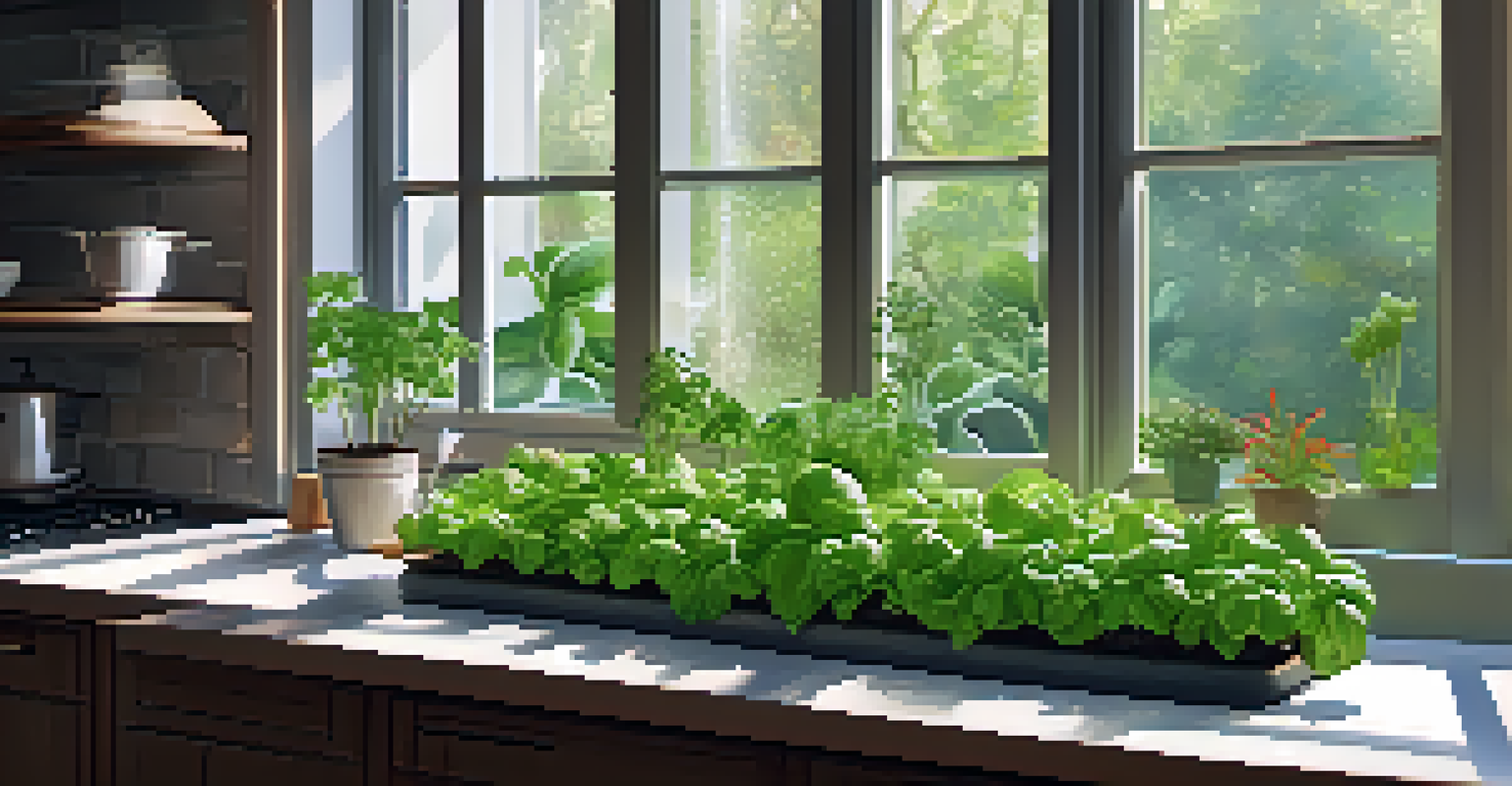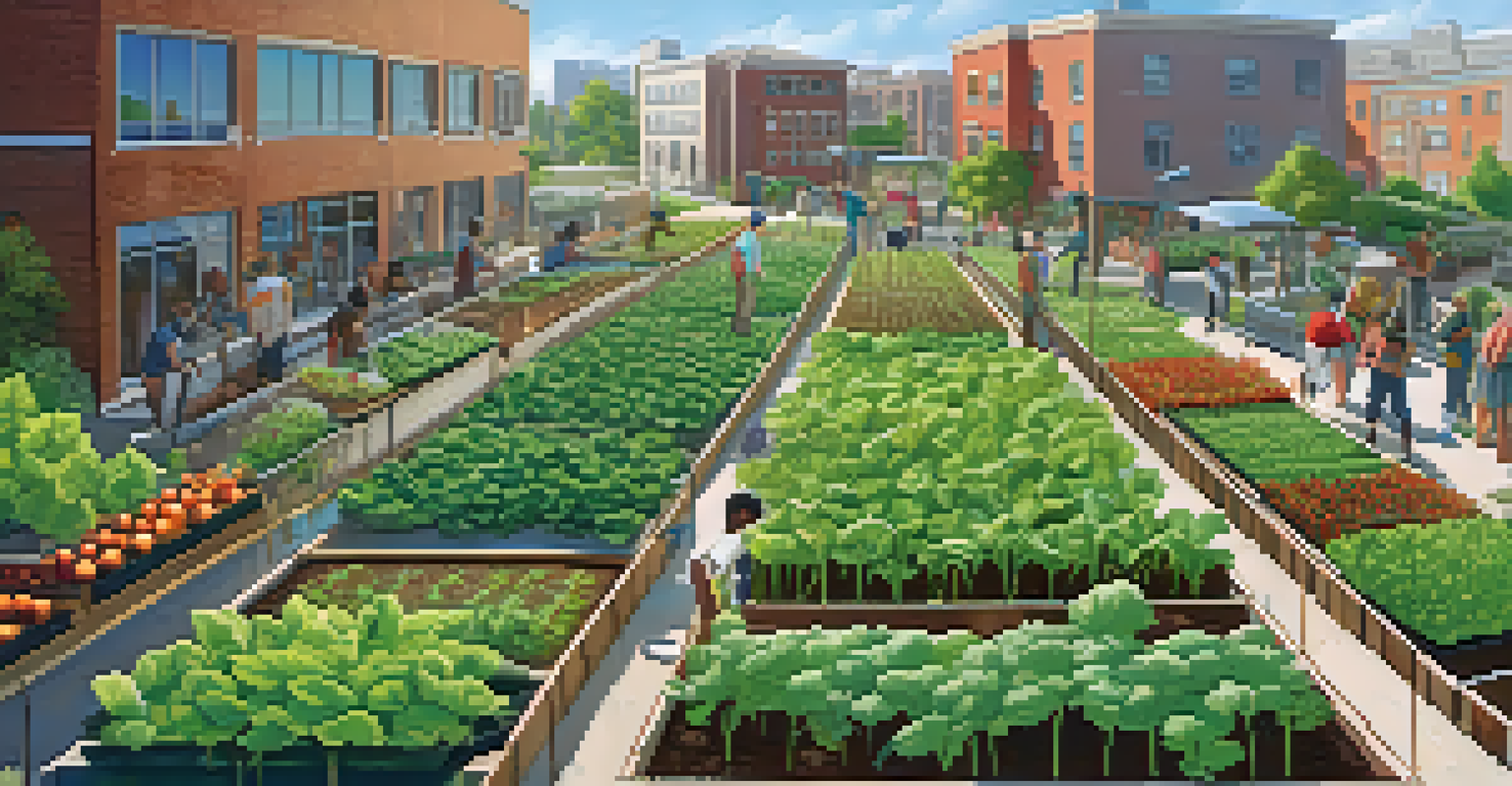Hydroponics in Urban Gardening: A Soil-less Revolution

Understanding Hydroponics: What Is It?
Hydroponics is a method of growing plants without soil, using nutrient-rich water instead. This innovative technique allows plants to absorb nutrients directly through their roots, leading to faster growth and higher yields. Imagine a plant thriving in a liquid buffet of essential nutrients, rather than struggling to extract them from the soil.
The future of food is not about scale but about access and quality.
In urban areas where space is limited, hydroponics offers a practical solution for growing food. It utilizes vertical farming systems, making it possible to cultivate a variety of crops in small spaces, from balconies to rooftops. Picture a city skyline dotted with green towers of fresh vegetables, right above the bustling streets below.
Many urban gardeners are turning to hydroponics not just for space-saving benefits, but also for its environmental advantages. This method uses significantly less water than traditional soil gardening and minimizes the risk of soil-borne pests and diseases. It's like giving urban dwellers their own slice of nature, free from the limitations of conventional gardening.
Benefits of Hydroponics in Urban Environments
One of the most compelling benefits of hydroponics is its efficiency. By providing a controlled environment, plants can grow year-round, regardless of external weather conditions. This means fresh produce is always available, catering to the needs of urban populations hungry for local, healthy food.

Hydroponics also reduces the need for pesticides and herbicides, making it a sustainable choice for urban gardening. Since plants are grown in a controlled environment, there’s less exposure to pests, which means less reliance on harmful chemicals. Think of it as a clean, eco-friendly way to enjoy your favorite fruits and vegetables.
Hydroponics Boosts Urban Food Growth
This innovative method allows city dwellers to grow food efficiently in limited spaces using nutrient-rich water instead of soil.
Furthermore, hydroponics contributes to urban greening and enhances air quality. Green spaces in cities not only beautify the surroundings but also help in reducing the urban heat island effect. Imagine walking through a city where the air is fresher, thanks to the green rooftops feeding back into the environment.
Types of Hydroponic Systems for Urban Gardening
There are several types of hydroponic systems, each with its unique advantages. Nutrient Film Technique (NFT), Deep Water Culture (DWC), and Ebb and Flow systems are just a few examples. Each system operates on the principle of delivering nutrients directly to plant roots, but they do so in different ways, allowing gardeners to choose based on their needs and space.
Urban agriculture is not just about growing food; it's about growing community.
For instance, NFT involves a thin film of nutrient solution flowing over the roots of plants, while DWC suspends the plants in a nutrient-rich water solution. If you’re short on space but want to grow a variety of herbs, a vertical aeroponic system might be your best bet. It's like picking the right tool for the job—each system suits different gardening styles and goals.
Understanding these systems can help urban gardeners make informed choices. Whether you're a beginner or a seasoned pro, knowing what each system offers can enhance your gardening experience. It’s like choosing between a quick meal or a gourmet dish—both can be satisfying, but the preparation will differ.
Getting Started with Hydroponics in Your Home
Starting a hydroponic garden at home can be simpler than you might think. With the right tools and guides, anyone can set up a small system, even in an apartment. Imagine having a herb garden right on your kitchen counter, ready to spice up your meals every day.
Begin with easy-to-grow plants such as lettuce, basil, or mint. These crops thrive in hydroponic systems and can provide instant gratification as they grow quickly. It’s like having a mini farm right at your fingertips, where you can see progress in just a few weeks.
Environmental Benefits of Hydroponics
Hydroponics uses less water and reduces the need for harmful pesticides, promoting a cleaner and more sustainable urban gardening method.
Investing in a starter kit can ease the learning curve, providing you with all the necessary components. As you gain confidence, you can experiment with different plants and systems. This journey into hydroponics can transform your perspective on food production, making it more personal and fulfilling.
Challenges of Hydroponics in Urban Settings
While hydroponics offers many benefits, it’s not without its challenges. The initial setup costs can be higher compared to traditional gardening, which might deter some urban gardeners. However, considering the long-term savings on purchasing produce, it can be a worthwhile investment.
Another challenge is the need for electricity to maintain the systems, especially for pumps and grow lights. This reliance on power can be a concern in areas with unstable electricity supply. Think of it like having a pet that requires regular care—keeping everything running smoothly is essential for success.
Moreover, without proper knowledge, it’s easy to encounter issues such as nutrient imbalances or diseases. Urban gardeners need to educate themselves and stay vigilant. Just like a chef perfecting a recipe, a hydroponics enthusiast must fine-tune their approach for the best results.
Hydroponics and Food Security in Urban Areas
As urban populations grow, food security becomes a pressing concern. Hydroponics presents a viable solution by enabling communities to grow their own food, reducing reliance on outside sources. Imagine neighborhoods cultivating their own produce, leading to fresher meals and stronger community ties.
This method of agriculture can also contribute to local economies. By fostering urban farms, cities can create jobs and stimulate businesses focused on organic produce. It’s like planting seeds not just for crops, but for economic growth and sustainability.
Challenges of Hydroponic Gardening
Despite its advantages, hydroponics can present challenges such as high initial costs and the need for consistent electricity supply.
Moreover, hydroponics can help combat food deserts—areas with limited access to fresh food. By setting up community hydroponic gardens, cities can provide nutritious options to those in need. It's a movement where everyone can participate, ensuring that healthy food is within reach for all.
The Future of Hydroponics in Urban Gardening
The future of hydroponics in urban gardening looks bright, with continuous innovations emerging. Technology is playing a crucial role, from automated systems that monitor plant health to apps that guide gardeners through the process. It’s like having a personal gardening coach in your pocket, ready to assist you at any time.
As cities prioritize sustainability, hydroponics will likely become a staple in urban planning. Local governments are recognizing the importance of green spaces and food production, leading to policies that support urban agriculture. Picture vibrant cities where green rooftops and vertical gardens are the norm, creating a healthier urban landscape.

Moreover, community initiatives are rising, encouraging more people to get involved in hydroponics. Workshops, local farms, and educational programs are making knowledge accessible to all. This movement is about more than just plants; it’s about cultivating a community that values sustainability and self-sufficiency.